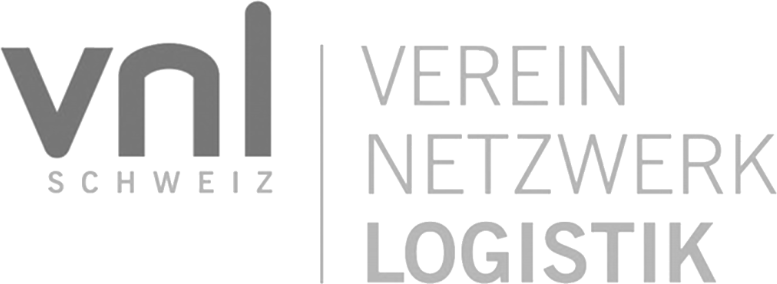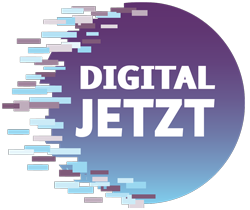And to say it up front:
It’s worth it – if you manage it right.
Why should the topic of CRM not be missing from your budget considerations for 2021?
The end of the year is always dominated by budget considerations for the following year. With every investment, you ask yourself the questions:
– Is it really worth it?
– Why should I budget money and human resources for it?
– Is this another project that is only talked about a lot and costs money, but in the end nobody uses it?
– How can a CRM project really be successful?
I would like to give you answers to all these questions.
What are the concrete benefits for the company of well-organized sales processes?
- More sales through better quotation tracking
- More customers through improved target customer acquisition
- More contribution margin through more efficient processes
- More transparency through working in a common central system
- More cross-selling through cross-divisional visibility of customer activities
- More efficient sales tours through “customer in the vicinity” search
- Uniform external image through quotation processes and templates in CRM
- Central knowledge database around customers
- Avoidance of knowledge loss due to staff fluctuation
- Easier onboarding of new sales staff and account managers
- More satisfied customers through better understanding of specific customer requirements
- More satisfied customers through regular customer contacts thanks to reminder functions
- Fewer losses due to offers to insolvent customers
- Fewer customer losses due to good customer experience and service
- Less time spent on acquiring target customers thanks to structured needs analyses
- Less effort in creating reports and dashboards
Who wouldn’t want to achieve all this? Just by using a tool – it’s definitely worth the investment.
Does the investment in this new software really make sense?
Strictly speaking, it’s a simple calculation:
Imagine that the company turnover increases by 5% and the profit by 1% as a result of these optimizations. If you have these figures in mind, you know what the CRM project may cost.
And I can assure you, with LOGO CRM the costs remain far below the benefits.
Our long-term customers report not 1% or 5%, but double-digit growth rates.
Just think how much money you would have to invest in marketing measures to achieve that. Certainly considerably more. And you not only increase your results, but also optimize many processes that have perhaps been running for years according to the old pattern and have never been put under the microscope, thanks to the ongoing digitization in the company.
How is this supposed to work with human resources? – Our IT is already overloaded!
IT resources are almost not needed at all for the implementation, because nowadays a CRM project is not an IT project, but change management and requires mainly process specialists and data mavens as well as multipliers in the company.
If you are worried about not having enough human resources, realize that the time put into implementing the CRM strategy will be saved many times over once the use of the customer database has become familiar to all employees.
Will this really work?
In conversations with owners, directors and managers, I hear over and over again that companies have simply had bad experiences with software.
Someone wanted a tool badly, it was budgeted for and paid for, and years later only a fraction of the features they wanted were actually used.
And I agree with you on one point: the software alone will not make the difference. No matter which CRM tool you choose.
Without a CRM and data strategy, the potential of CRM will not be fully realized
If you really want to benefit from implementing a CRM tool and reap the ROI, you need to make sure that the tool is used wisely. And that it’s integrated with your management strategy. Here’s what’s important to do that:
- The sales processes must be analyzed in advance and the potential for optimization must be worked out.
- A rollout plan must be worked out so that the different employee groups get to know exactly those functions that help them in their daily work and that they already understand.
- A data strategy must be in place so that CRM is fully integrated into the data landscape and you can get the most out of the information collected in the CRM database.
- The goals to be achieved by the CRM strategy must be clearly defined, measurable, and known to all stakeholders.
- Sufficient human resources for project management, internal agreements, internal knowledge transfer and training must be planned.
The degree of utilization of a CRM tool is often more decisive than the software functions
I don’t like to say it as a software manufacturer and CRM consultant. But unfortunately it is true. The most beautiful CRM is of no use if people don’t work with it.
This also happens again and again in CRM projects: You decide on the top tool from the top manufacturer, the marketing is gigantic, the salespeople super professional – But when you look at the usage level after a year, it’s totally frustrating, because only a tiny part of the huge feature set has actually been used.
Of course, this should not happen and I fully understand when the management comes up with such arguments after the sales team has reported enthusiastically about the new tool. Just this month I had such a conversation.
The use of the various CRM functions must be made understandable to the employee groups

Only if everyone in customer contact uses the functions of the CRM tool will it be possible to build up a central knowledge database around the customers.
Here, employees from operations, billing and customer service must be able to provide their input and find their information just as much as sales and management.
What goes wrong when the level of utilization does not meet expectations?
From my perspective, the most important thing is that employees understand WHY they should be entering data into CRM. If they understand it as a “data grave” or as a “golden typewriter” we cannot expect really relevant information.
Everyone needs to understand why CRM data is incredibly important strategically because, along with operational data, it forms the basis for data-driven decisions. Every entry contributes to the company’s success. What is not in CRM cannot be used strategically to increase customer satisfaction, optimize utilization, plan realistically, and grow the company’s market share.
Employees need to be guided and mentored to understand the relevance of their entries. On the one hand, so that they can perform their own work more efficiently; on the other hand, so that cooperation between departments is optimized and management can make the right decisions.
Digital leadership is often the key to success
Meiner Erfahrung nach ist die absolute Mehrheit der Mitarbeiter bereit und in der Lage an den großen Unternehmenszielen mitzuarbeiten und damit ein CRM-Projekt zu einer Erfolgs-Geschichte zu machen.

In my experience, the absolute majority of employees are willing and able to collaborate on the big business goals and thus make a CRM project a success story.
When employees see that their superiors see the data from the CRM database and use it not to control their colleagues, but simply to make the company more successful, that is a powerful motivator.
If the boss gets the pipeline for the next quarter directly from the CRM and does not want to receive it as Excel or PowerPoint, the potentials are also neatly managed there.
If the branch manager uses the customer activities to get an idea of which customers need to be looked after once again, each account manager will store his appointments and reports to look good with his customers.
When statistics about new sales and new customer acquisition are drawn from the CRM, every salesperson will deposit and maintain his contacts there.
Enthusiasm sweeps along – even employees who are reluctant to use new tools

CRM multipliers in the company
In every company, there are employees who are initially reluctant to change their usual work processes and enter all information into the CRM database.
However, colleagues often sweep these employees along when they show how well they can organize themselves by making the most of the tool’s capabilities.
Would you like to learn more about successful CRM projects? Then feel free to contact us!
This post was published on the BVL BVL-Blog on 16.11.2020.













